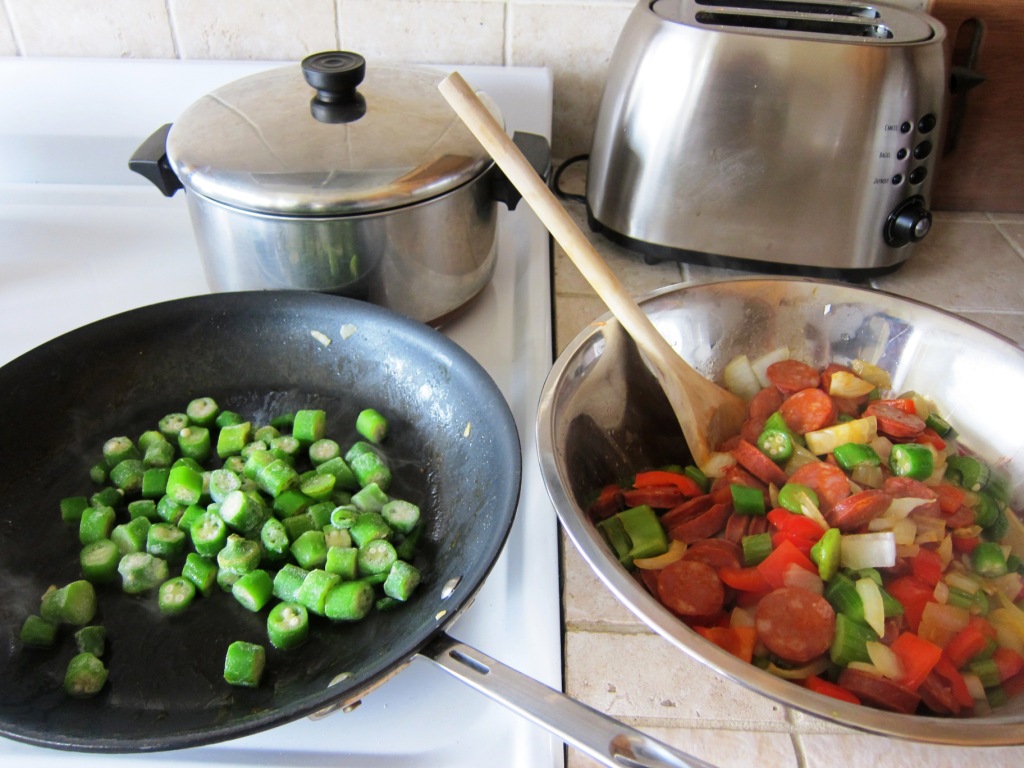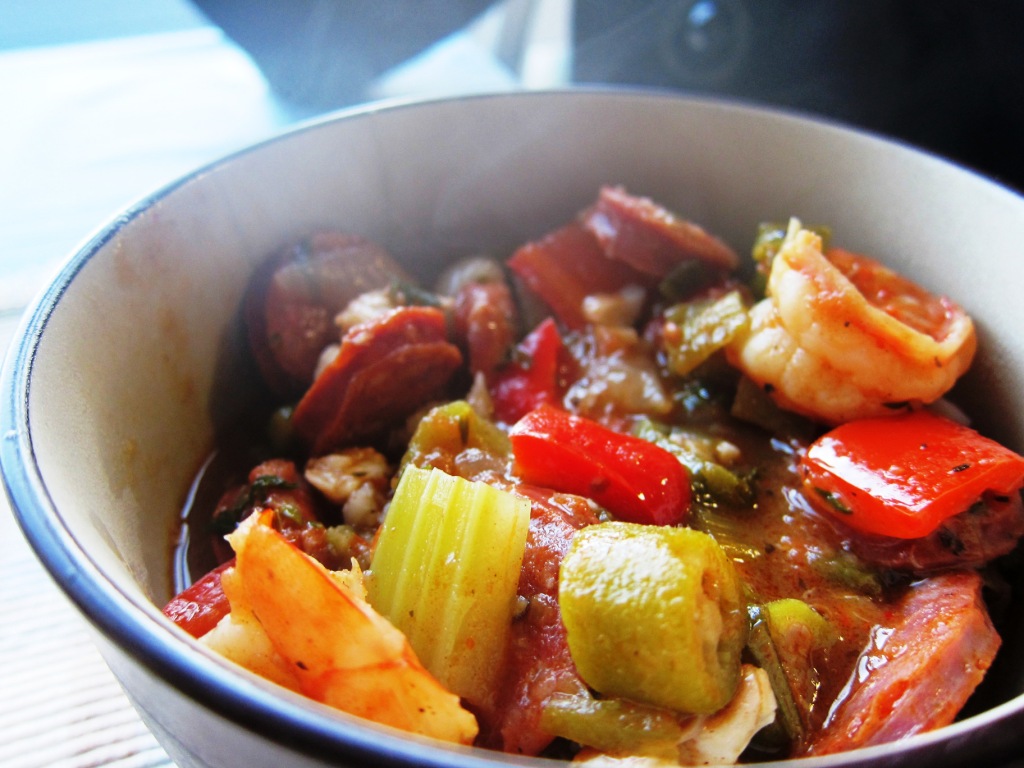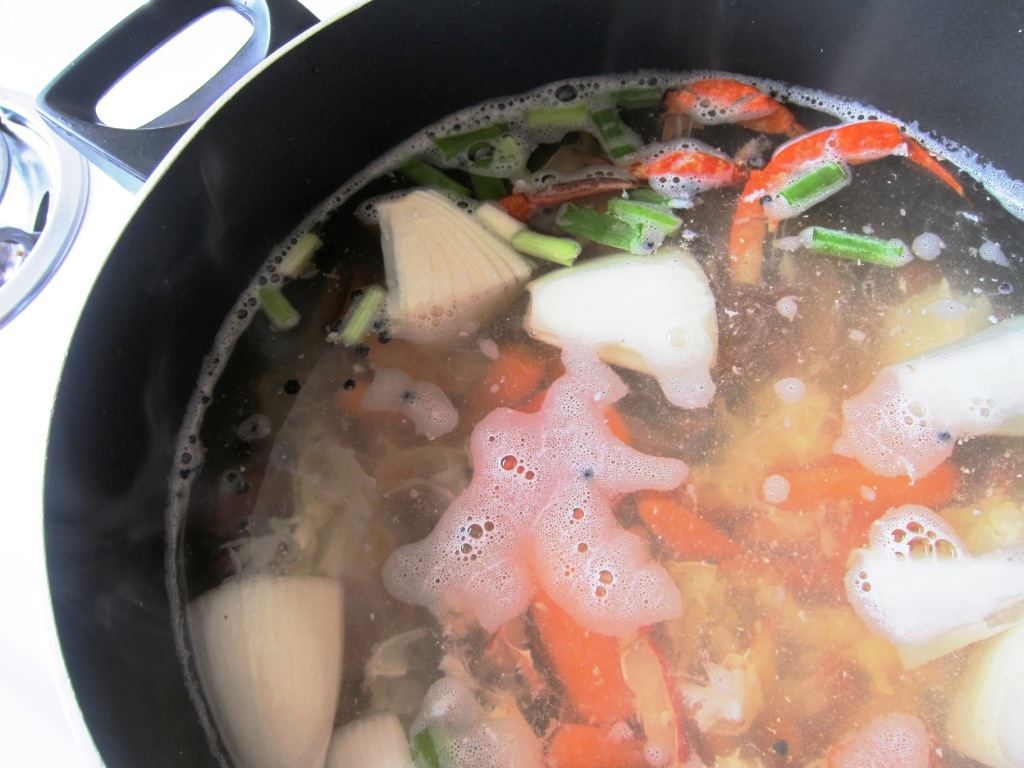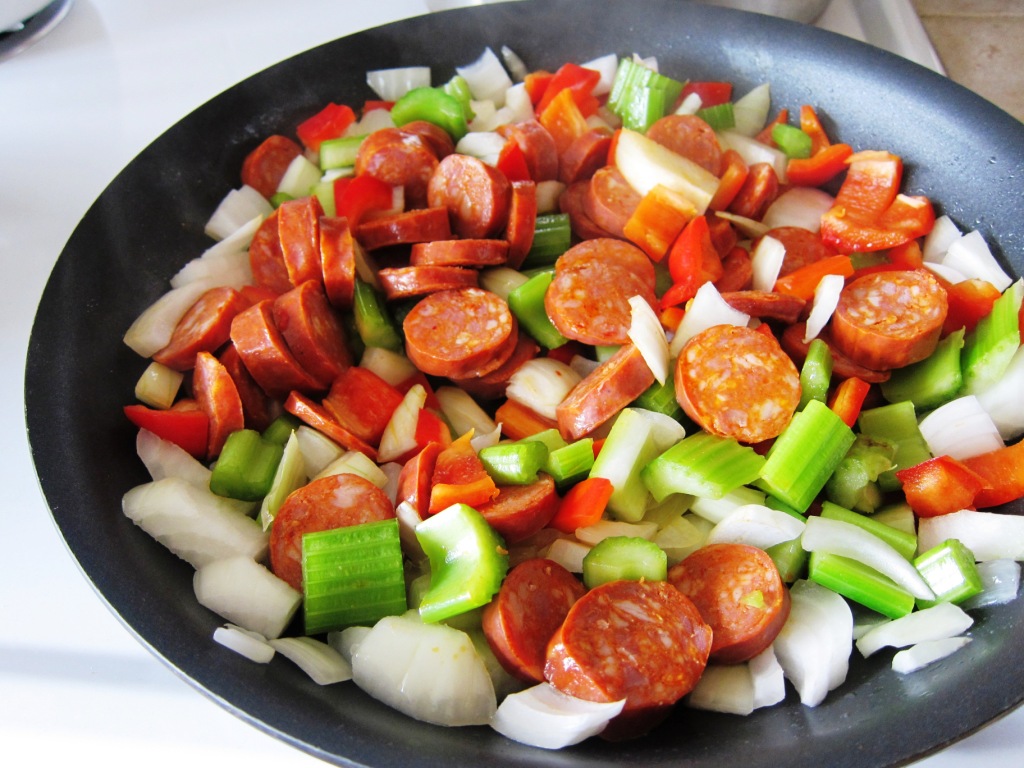Gumbo, like any great dish, comes with fervent devotees, each with their own “correct” recipe. With my gumbo I think I’ll probably manage to offend each one of those schools of thought. Not only do I use linguica instead of andouille, I add some homemade chili powder, both okra AND filé powder, and even (*gasp*) tomatoes.
Yet, as this blog makes perfectly clear, I am far from a purist. I am an experimenter and a blasphemer. So, I did just that (blasphemed, that is) and, fortunately, it turned out that experimentation and blasphemy work quite well with gumbo. Sure, there are things that I will change the next time I make it (and I’ll let you know what they are), but ultimately I’d say this was a success.
As a side note, my picture taking was NOT a success. I was under the impression my camera had run out of batteries, when in fact the camera had simply shut off to spite me (probably). I didn’t realize this until much later, so that explains why I only have pictures of the very beginning of preparation and none until it was fully prepared.
This dish was inspired by the copious amount of crab stock that I made in order to do something productive with the pile of crab shells I had laying around after my attempt at crabcakes.
I simmered the shells with onions, carrots, garlic, whole peppercorns, salt, and some scallions I had left over from the crabcakes. However, feel free to simmer it with aromatics, herbs, and spices of your choosing. Note that this can be made with shrimp shells, fish bones, crawfish shells, or any combination thereof. Every time you eat any seafood, save the bones/shells and freeze them. When you have a good amount, then you can make stock.
Once the stock had been simmering for a few hours or so, I drained it using a colander. It wasn’t a very clear stock, but luckily gumbo doesn’t require completely clear stock–especially when you make it with (*gasp*) tomatoes.
However, I didn’t really know what to do with it. I only had two ideas, really:
- Make cioppino. The only reason I didn’t is because I owe a friend of mine cioppino and there wasn’t enough time to invite him. If you must know, the cioppino debt was in exchange for an invitation to a Chinese New Year feast cooked by his grandma and extended family. It was well worth it.
- Crab juice. I actually drank quite a bit of stock while contemplating its uses. It was delicious.
However, Googling revealed gumbo and once I saw that, I pretty much stopped looking. I love any dish that allows me to have a variety of meats, myriad flavors, and–as a great bonus–is incredibly easy to make. This took me about 20 minutes of chopping, one step that I’m considering eliminating, making a roux, throwing everything together and walking away. Provided you have stock, you can go from wanting to eat gumbo to eating gumbo in less than an hour (provided you have a grocery store within walking distance… which I do, neener neener).
On a semi-related note, you can use pretty much any type of seafood stock for gumbo. Make it how you like it.
Or with what you have available.
Or don’t make it, FINE.
Overall, frying the vegetables and sausage just led to a much softer texture in the finished product. The celery still had some bite, but the bell pepper, celery, and onion were pretty incorporated into the stew. Tommy suggested that I go with a much hotter cooking surface and reduce the cooking time, which I might try next time. However, the temptation to just throw it all in the pot and let it cook is pretty strong as well. Who will prevail? Culinary adventure or laziness?*
I read a few different recipes that suggested to quickly submerge the sausages in boiling water (like blanching, but without the ice bath), but it seems you would lose fat that way and Lord knows you don’t ever want that, especially not with any sort of Southern cooking.
Speaking of the South, let’s quickly address gumbo’s origins. You may hear gumbo being called a Cajun or a Creole dish. For the purposes of this post, I decided to research the difference between the two, and to tell the truth, it’s rather complicated and relatively inconsequential to anyone not from Louisiana (if you’d really like to know more, take a look here). For our purposes, Creole/Cajun simply signifies cross-cultural pollination with a heavy French emphasis. A Frenchman might see a gumbo as a kind of bastardized bouillabaisse or seafood stew.
Gumbo’s true international character shines through in its thickening agents–the roux (French), okra (African), and filé (Native American).
The roux is how you start the dish. Simply melt a bunch of butter (I used about a stick and a half or so) and then add an equal amount of flour and mix until it doesn’t taste like raw flour anymore. While you can use it when it’s at the “light roux” stage, for gumbo it’s more appropriate to wait until it has darkened a bit. I generally wait until it’s about the color of the old beige Volvo station wagon my parents owned during my childhood.
Okra is seen by many to be the heart of the dish. It not only is another wonderful texture and flavor to add, but due to its mucilaginous nature, it actually helps to thicken it as well. As a matter of fact, the word gumbo comes from the word for “okra” in several different Bantu dialects (okingumbo, gombo, ngumbo, gomboaud; no, I don’t know how to pronounce any of them). I have read some recipes that advise cooking them down first until they lose that sticky, gooey character, but I didn’t notice it in the finished product.
And, last but not least, filé is a powder made from sassafras root which is used similarly to corn starch or arrowroot powder. It should be added at the end of cooking and preferably taken off the heat shortly thereafter.

Okra. In order to maintain scientific inaccuracy, I both fried some okra and then added some frozen okra straight to the pot.
So, in the interest of blogging laziness, I’m not gonna write out a recipe, but just a very simple list.
- Make seafood stock (fish, crab, shrimp… or any combination thereof). This can be done ahead of time.
- Chop desired vegetables (the holy trinity is bell peppers, onions, and celery, but feel free to experiment). Here is where you would add okra as well. I used frozen okra. I guess this can also be done ahead of time.
- Optional: Quickly saute vegetables and sausages.
- Here is the point where I would start the rice if I was planning on eating the gumbo immediately. And trust me, you’re going to want to eat the gumbo immediately.
- Make a roux.
- Add vegetables (and, *gasp*, tomatoes), seafood (everything from shellfish to fish fish will work), sausages, seafood stock, and herbs/spices (for me, lots and lots of fresh thyme, cayenne, some homemade Iranian chili powder, and salt and pepper).
- Cover and simmer for about 30-60 minutes.
- Enjoy.






2 Comments
Oh my, I’ve been saying for months I’m going to make gumbo but your post may be the final straw. That gumbo looks absolutely insane! Thanks for for the motivation!
Also, lovely blog you have. I randomly stumbled upon it during blog-surfing. :)
Thank you! I appreciate your kind words.
Do make gumbo. And do blog about it.
Post a Comment